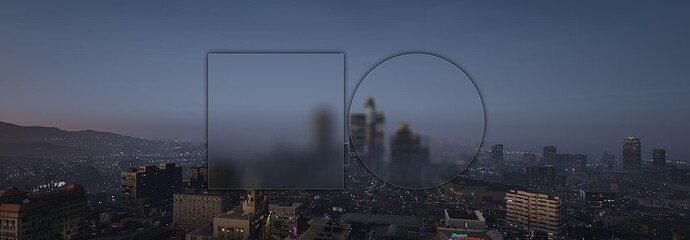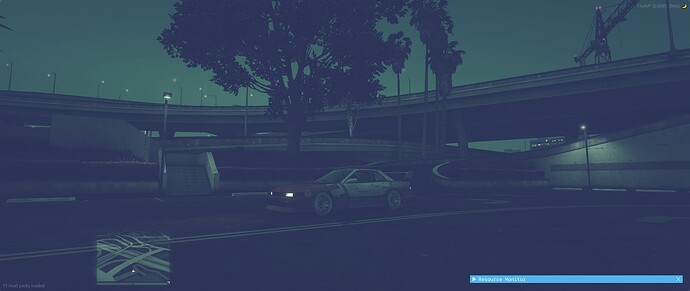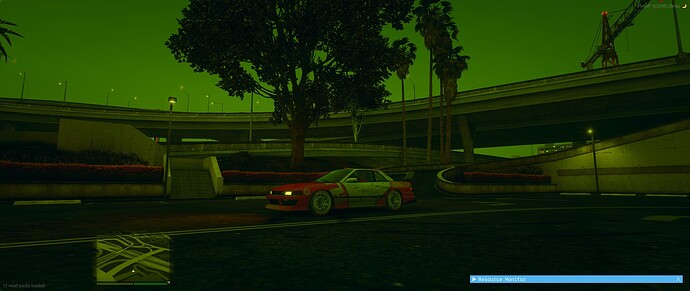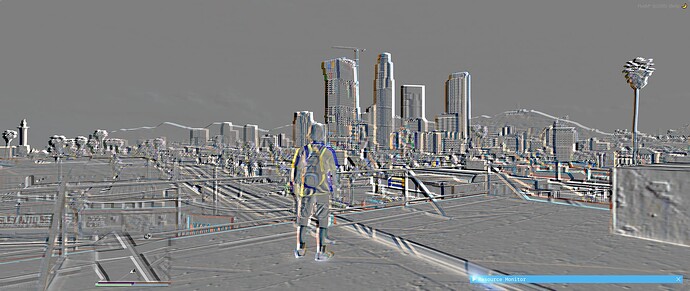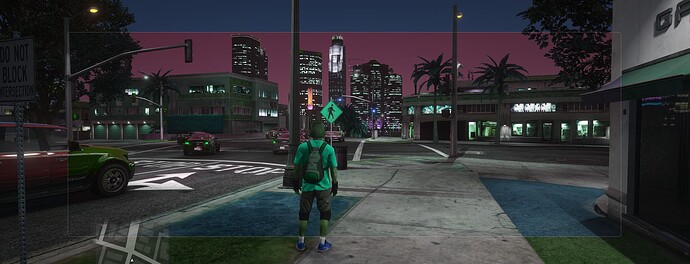FiveM GLSL rendering POC to manipulate the game screen.
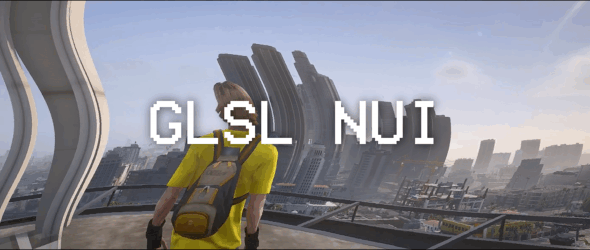
Overview
This project demonstrates a proof-of-concept (POC) for applying GLSL-based blur effects over a game render. It uses WebGL to create customizable, real-time blur effects on specified elements over the game’s user interface.
Features (Built in)
-
GLSL Support
-
Support for both circular and rectangular blur regions
-
Real-time blur effect using GLSL shaders
-
Customizable blur strength
-
Responsive adapts to window resizing
Implementation Details
The project consists of three main files:
-
index.html: Defines the basic structure and blur effect elements -
gamerender.js: Contains the WebGL implementation for the glsl and blur effect logic -
styles.css: Basic CSS styles (for example)
Or include the gamerender.js in your project!
-
gamerender.js: Include in your project -
Set data value on where you want glsl to render
data-hlsl -
Example to control the strengh
data-blur-strength="5"
How it Works (The example Glassmorphism/Blur)
The script creates a WebGL context and renders a blurred version of the game screen behind specified elements. It uses a fragment shader to apply a Gaussian blur effect, which can be customized for each element.
Usage
To apply the blur effect to an element, add the following data attributes:
-
data-hlsl: Marks the element for blur effect application -
data-blur-strength="5": Sets the blur strength (optional, default is 5)
Example:
<div id="glass-square" data-hlsl data-blur-strength="20"></div>
<div id="glass-circle" data-hlsl data-blur-strength="5"></div>
Performance Considerations
It’s important to note that it’s somewhat of a hacky solution and not intended for constant use. The performance impact can be noticeable, especially on lower-end systems or when multiple blur regions are active.
Consider the following when implementing this effect:
-
Use sparingly and only when necessary
-
Adjust the
resolutionScalein the configuration to balance quality and performance (this is mainly for using the blur shader) -
Monitor frame rates and adjust accordingly
Examples
Here are some examples of how i used this resource!
Glassmorphism effect!
LUT Effects
Other Effects
Animated Effects

Configuration
The config object in gamerender.js allows you to adjust various parameters:
const config = {
resolutionScale: 0.5, // Scale of the rendering resolution i would keep this at 0.2-1.0
defaultBlurStrength: 5.0, // Default blur strength
zindex: '-1', // z-index of game render
renderColour: [0.0, 0.0, 0.0, 0.0], // RGBA (for debugging cutouts)
maxBlurSize: 20, // Maximum blur size (affects performance and quality)
};
Conclusion
This GLSL support effect provides a unique way to enhance the visual appeal of your FiveM NUI. However, due to its performance impact, it should be used judiciously and with careful consideration of your target audience’s hardware capabilities.
Also please note that “tearing” is an issue where the canvas render is happening (this could be virtually invisible if perfomance is good on the clients game)
Feel free to experiment with different configurations and create new glsl shaders!
If you use this on the FiveM Platform please if you would be so kind mention me <3
I would love to see your usecases!
Enjoy my mess!
gtasnail/fivem-glsl: A POC to run glsl on FiveM client game screen ![]()
